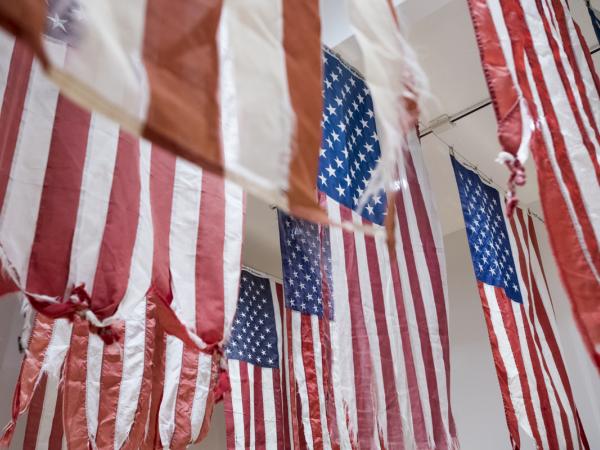MUSEUM EXHIBITION
The exhibition features works that illuminate the many ways American citizens participate in our democracy. Historical pamphlets and books from the collection of the Wolfsonian Museum related to demonstrations for workers’ rights and women’s suffrage illustrate the long history of citizens organizing for political change. Materials from the collection of Wendy and Alan Pesky made in connection with marches in New York in support of Soviet Jewry shed light on Americans’ promotion of democratic reforms abroad through public action at home.
Deborah Aschheim has made a series of drawings based on photographs and oral histories of protest marches in Southern California in the 1960s and 1970s, as well as drawings of participants at events throughout 2017.
Kate Haug also revisits the protests of the 1960s in her project, News Today, a consideration of Martin Luther King Jr.’s 1968 Poor People’s Campaign. A print and embossed matchboxes that Haug made as part of the project ask viewers to consider the ways they engage in the democratic process today.
The photographs in Paul Shambroom’s project Meetings document democracy at its most local level—city council meetings in small towns around the United States. Shambroom’s photos illustrate the role that everyday citizens play in government.
The exhibition includes a selection of flags from Mel Ziegler’s ongoing project, Flag Ex-change, through which he has exchanged a new flag for an older, tattered flag, with at least one person in each of the 50 states, illuminating the powerful symbolism of the American flag across the political spectrum.
Two bodies of photographs reflect on moments of collective national mourning. Eugene Richards’ project Lincoln Funeral Train traces the path of Abraham Lincoln’s funeral train, which traveled more than 1600 miles from Washington, D.C., to Springfield, Illinois. Richards’ photographs ask viewers to think about how Lincoln’s legacy resonates today. Photographs Paul Fusco made while traveling with Robert F. Kennedy’s funeral train from New York City to Washington, D.C. depict the thousands of mourners who came out to pay their respects.

